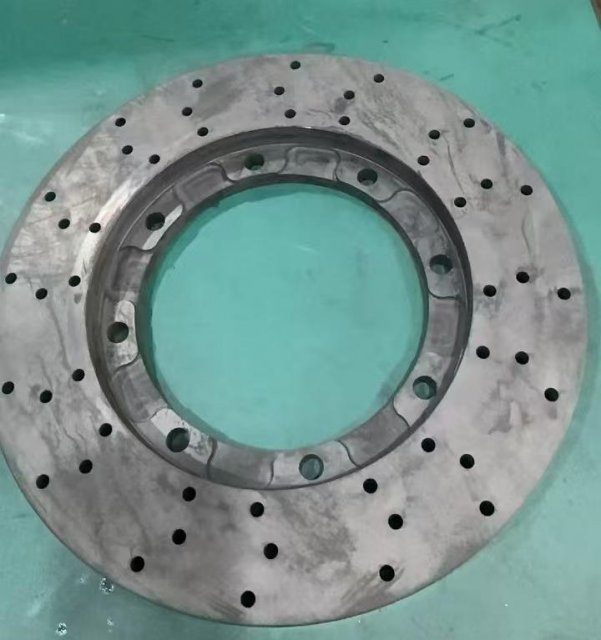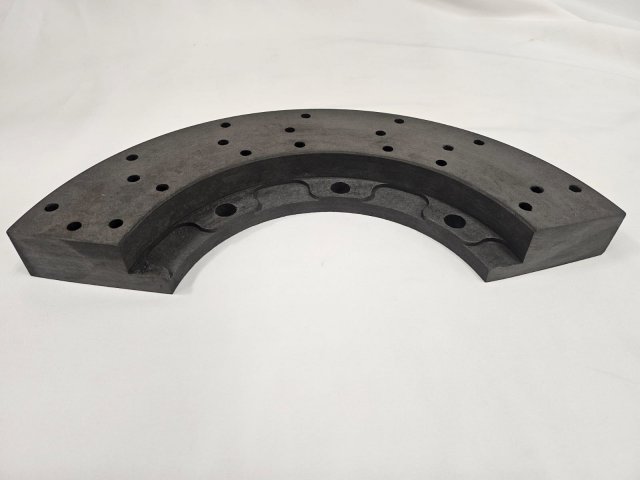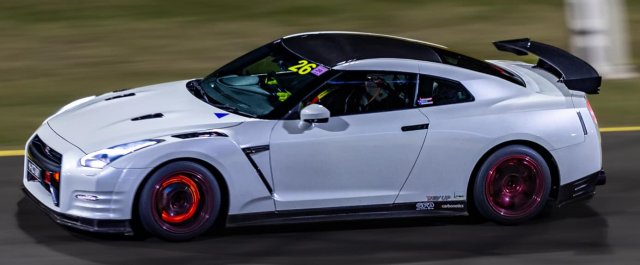*** PRODUCT UPDATE ***
After finishing our first samples of our new Carbon Composite Brake Discs, we have dissected them to check structural integrity and everything checks out ok. Next up is dyno testing to check for performance and wear under high temp/frictional loads.
All going well, expect these to be released to market by the end of the year (if you will be attending PMW in Cologne next month, we will have a sample on display). Our aim is to have a full range of fitments available for most popular vehicles and will be direct oem-replacement (i.e oem calipers can be used)
These will be our "Game Changer" product, offering the same level of performance (stopping power, fade, heat dissipation) and weight reduction (under 3kg per disc for 15/16/17" fitments and under 6kg for 18/19" fitments) as our top-tier Carbon Ceramic discs, yet will be priced comparably to high performance 2pc Iron discs (PFC, Giro Disc etc at a few hundred $'s per disc)
So what's the difference between these and our Carbon Ceramic discs (other than cost)?
The only difference is durability (i.e wear/oxidation) under heavy track use (high temps). Whereas our Carbon Ceramic discs are constructed from 1pc solid material (and take 2-3 months to produce), these new discs are actually made from several layers of "off cuts" from the Carbon Ceramic production process stacked on top of each other (multi-layer).
Don't confuse this with the cheap "chopped" Carbon Ceramic discs on the market; we still use the same material as our next generation Carbon Ceramic discs, but instead of throwing away the "off-cuts", we can now put them to better use. Not only does this significantly reduce costs, it also reduces the production time to only 2 weeks!
For heavy track use though, we would still recommend our Carbon Ceramic discs due to the increased durability. For street use and occasional track use, there would be zero difference other than cost.
Stay tuned for more updates after we've finished the dyno testing 😎
If you have any questions, or if you are interested in testing/sponsorship, please PM me.
After finishing our first samples of our new Carbon Composite Brake Discs, we have dissected them to check structural integrity and everything checks out ok. Next up is dyno testing to check for performance and wear under high temp/frictional loads.
All going well, expect these to be released to market by the end of the year (if you will be attending PMW in Cologne next month, we will have a sample on display). Our aim is to have a full range of fitments available for most popular vehicles and will be direct oem-replacement (i.e oem calipers can be used)
These will be our "Game Changer" product, offering the same level of performance (stopping power, fade, heat dissipation) and weight reduction (under 3kg per disc for 15/16/17" fitments and under 6kg for 18/19" fitments) as our top-tier Carbon Ceramic discs, yet will be priced comparably to high performance 2pc Iron discs (PFC, Giro Disc etc at a few hundred $'s per disc)
So what's the difference between these and our Carbon Ceramic discs (other than cost)?
The only difference is durability (i.e wear/oxidation) under heavy track use (high temps). Whereas our Carbon Ceramic discs are constructed from 1pc solid material (and take 2-3 months to produce), these new discs are actually made from several layers of "off cuts" from the Carbon Ceramic production process stacked on top of each other (multi-layer).
Don't confuse this with the cheap "chopped" Carbon Ceramic discs on the market; we still use the same material as our next generation Carbon Ceramic discs, but instead of throwing away the "off-cuts", we can now put them to better use. Not only does this significantly reduce costs, it also reduces the production time to only 2 weeks!
For heavy track use though, we would still recommend our Carbon Ceramic discs due to the increased durability. For street use and occasional track use, there would be zero difference other than cost.
Stay tuned for more updates after we've finished the dyno testing 😎
If you have any questions, or if you are interested in testing/sponsorship, please PM me.
Attachments
-
161.1 KB Views: 4
-
88.7 KB Views: 4



